Seeing the first juvenile birds, just out of their nests, is one of the birding highlights of the summer months. In some cases it’s obvious what species a fledgling belongs to, but others can be more tricky. Similarly, some species have very obvious differences between adults and juveniles, but in a few species the differences are more subtle. See below some tips and photos of adult and juvenile birds that you’re likely to find in your garden this summer.
Some tips for identifying recently-fledged juvenile birds:
- In the photos below the adults are on the left and the juveniles are on the right (or adults on top, juveniles on bottom if you’re on your phone).
- Depending on when you see it, the bird you’re looking at might look younger than the birds pictured here, so there is a bit of variation to keep in mind.
- Note that juveniles are the same size as their parents by the time they fledge the nest!
- You can’t rely on fluffy feathers to indicate something is a juvenile bird. Adult body feathers are fluffy too and they’ll fluff them up after a wash, to keep warm, or when they’re sick.
- Behavioural clues will also help separate juveniles from adults. Juvenile birds might be a bit noisier (calling to their parents), might flap their wings rapidly to beg for food, and might be a little less fearful of humans than their grown up counterparts.
Note that it’s illegal in Ireland to photograph or disturb nests with chicks or eggs, so wait until the chicks fledge from the nest to enjoy them in your garden!
Robin
Fledgling Robins completely lack the red breast, but instead have a speckled head and front. The reason juveniles don’t start out with a red breast is because the colour triggers aggression in territorial adult Robins, so they can avoid conflict in their early days by not having any red.
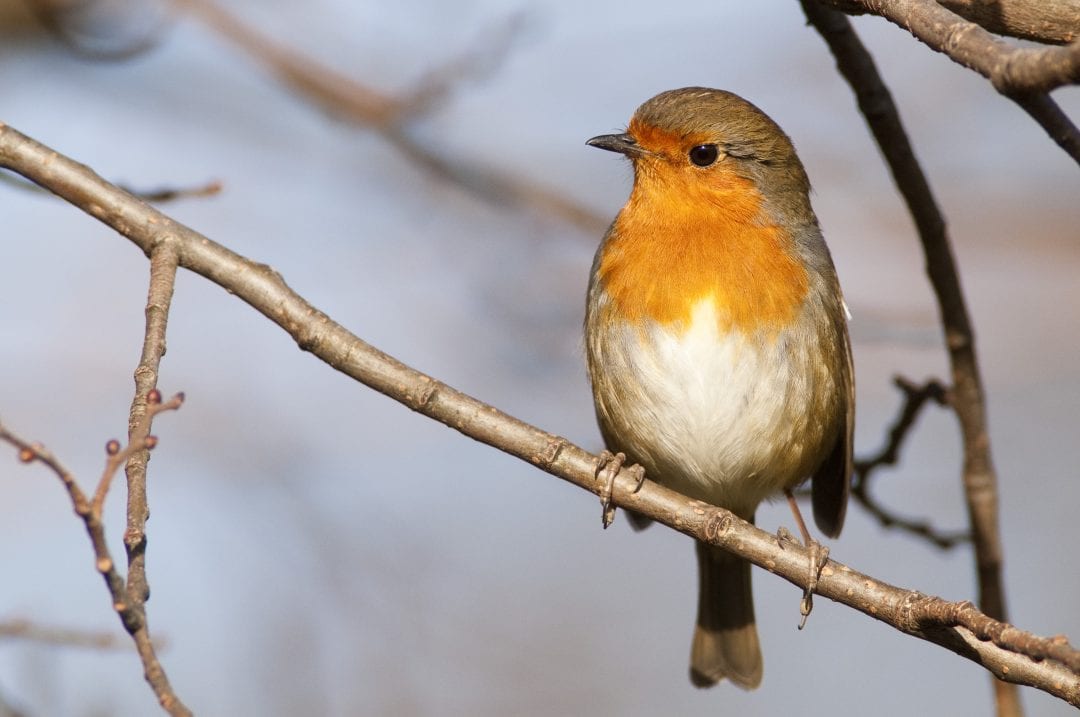



Blackbird
Juveniles have a very brown, speckled appearance and a dark bill. You’re unlikely to confuse them with the jet-black, orange-billed adult males, but the fledglings can look similar to adult females. The adult females will have some yellow colour in the bill yellow and a dark brown back, with only a small bit of speckling on the front.




Blue Tit
Juveniles have yellow cheeks, which make them look quite different to the white-cheeked adults. They also have a more green appearance compared to the strong yellows and blues of the adults.




Chaffinch
Juveniles Chaffinches can be very tricky to separate from adult females, so any behavioural clues will be a big help. Juveniles are often a bit paler/grey-er than females, which are a more warm brown.




Magpie
Juvenile Magpies look quite similar to their parents. One of the main clues to identify a juvenile is the short tail. Their plumage tends to be a bit duller and less glossy than the parents too and the white parts of their plumage are less well defined. They also have a ‘young-looking’ head. (the bird pictured here is a ‘mature’ juvenile)


Great Tit
Juvenile Great Tits are much duller than the adults – no vibrant yellows on the belly or strong green on the back, but instead a paler yellow in many parts and a more dull brown back and wings. There may be some yellow in the cheeks too. The yellow gape at the inner part of the bill might be visible too (see very young bird pictured here).

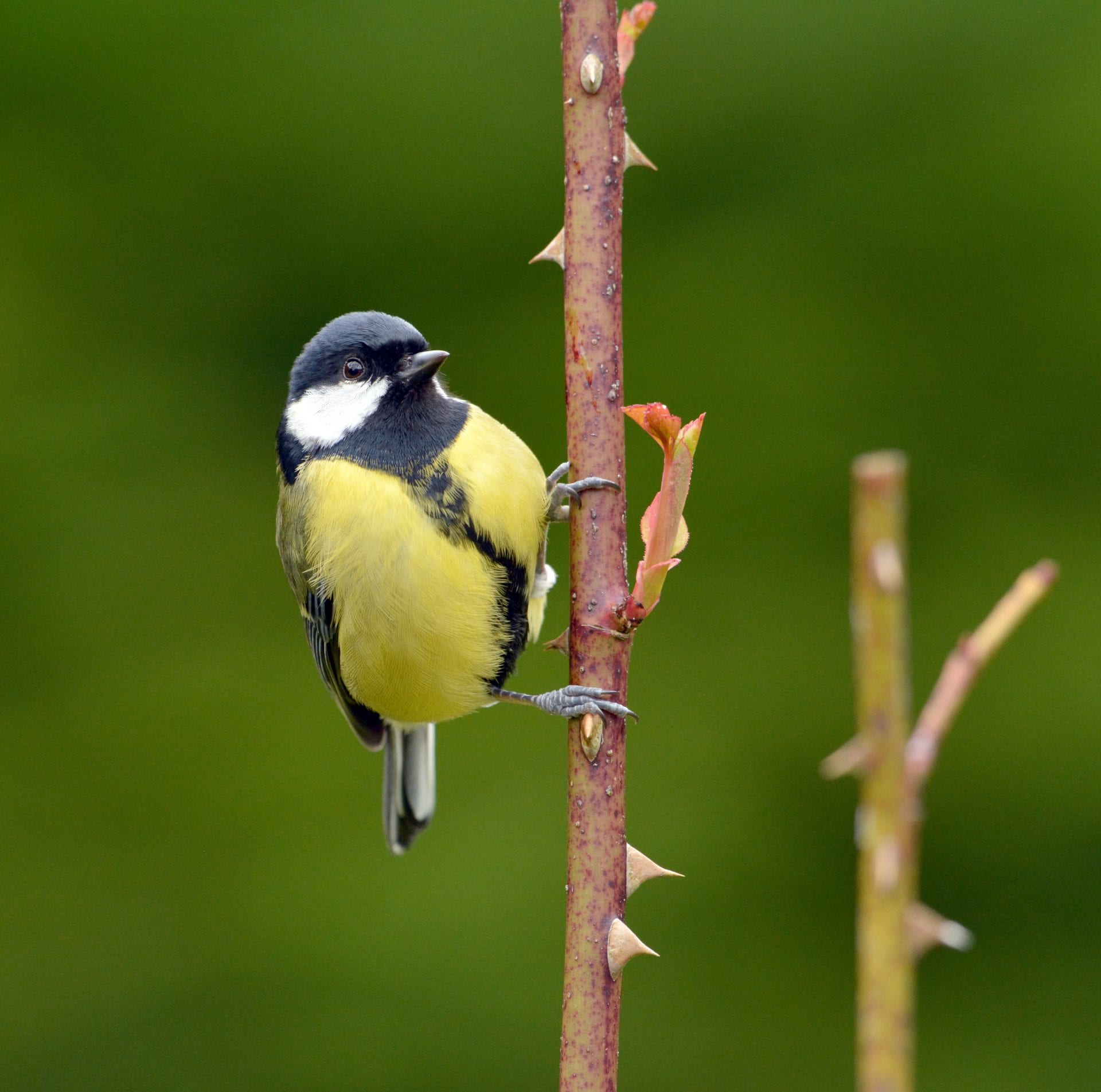

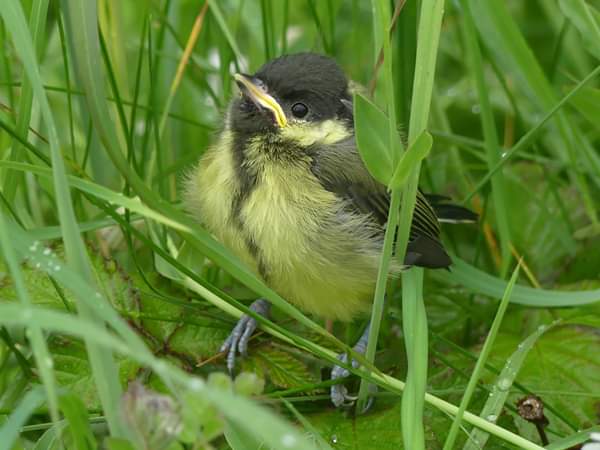
House Sparrow
Fledgling House Sparrows can be tricky to differentiate from adult females. The fledglings will sometimes have a yellow gape still visible (the bit at the corner of the mouth/bill). You can often tell by their behaviour too – fledglings are noisy and demanding and often ‘vibrate’ their wings when begging for food.




Goldfinch
Juvenile Goldfinches lack the striking red, white and black heads that the adults have, but instead have a pale brown, speckled head. Depending on how recently they fledged, juveniles might have little yellow on the wings, though this can vary.



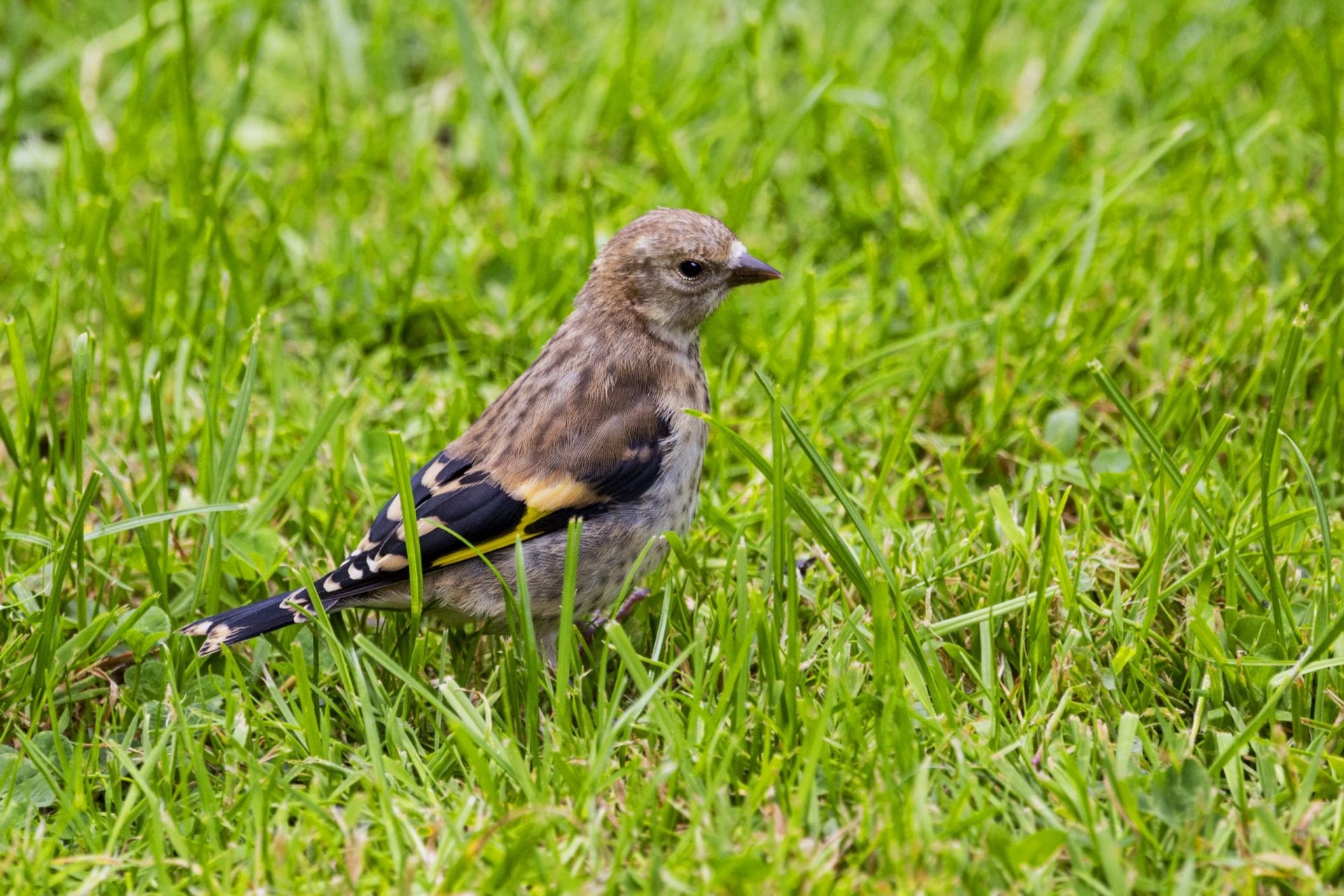
Coal Tit
Juvenile Coal Tits have yellow-ish cheeks, whereas those of the adults are more noticeably white. The yellow cheeks of the juveniles extend more forward on the face and down into the breast, whereas for adults this area is more clearly defined black and white.


Starling
Adult Starlings are black, with almost-metallic greens and purples in the plumage and yellow bills. Their juveniles, by comparison, are a muted brown colour all over, with a black bill. Even as they moult into more grown-up plumage later in the summer they’ll still retain their brown head. Starlings have multiple broods each breeding season, so there will be noticeable increases of young birds flocking together at various stages during the summer.




Wren
There isn’t much different between the adult and juvenile Wrens. Young birds will have shorter, stubbier tails and a slightly more ‘fluffy’ appearance. In very young birds the bill will be more yellow and short too, compared to the orange/brown and longer bill of the parents.




Dunnock
Fledglings look very similar to adults, but have a more streaking, particularly on the head.



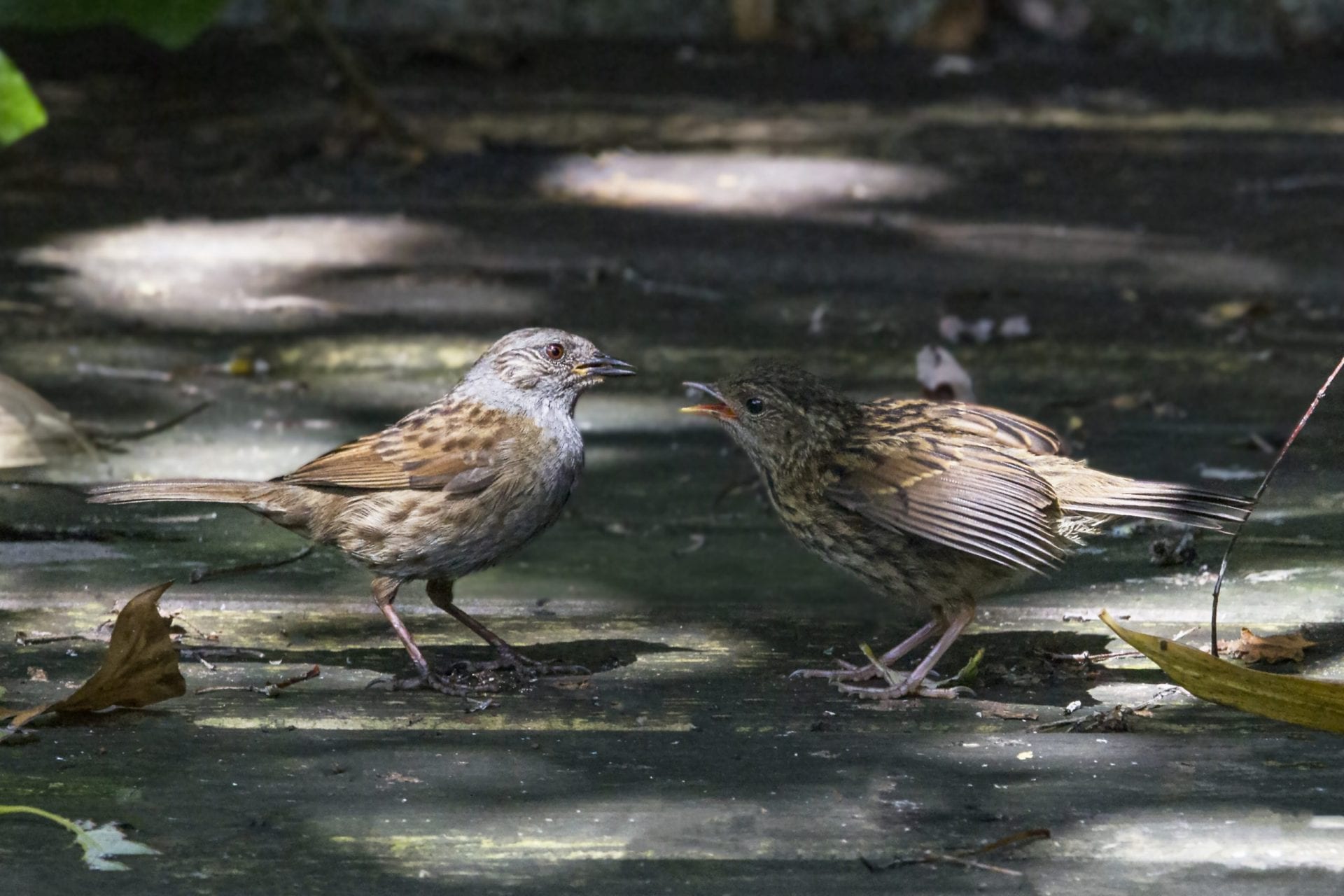
Woodpigeon
The main feature to help differentiate fledgling Woodpigeons from the adults is the lack of the white patches on either side of the neck on the juveniles. They also have a more grey and dull bill and a plainer overall appearance than their parents. Note too the love-like raised shape of the start of the bill, which will become more adult-like with time.


Jackdaw
Adult Jackdaws have a black cap and grey wash to the back of the head and neck. Juveniles, by contrast, have an all-black appearance. Both adults and juveniles have a pale blue eye and they’re smaller than other crow species such as Rooks.


Rook
Juveniles have a black bill, with black feathering on top. Adults, by comparison have a more pointed and very-obviously grey bill, and lack any feathering on top (or under) the bill.


Collared Dove
Collared Doves, like most pigeon species, can breed in most months of the year so aren’t constrained to the summer for nesting. Fledglings will have a poorly-developed collar, or may be lacking it completely. If you see them in the right light, their eye is brown rather than the red that the adult eyes have. The bill-shape too is different to the adults.


Song Thrush
It can be hard to differentiate between juveniles and adults from a distance as they look very similar. Look out for the yellow/brown speckling on the ‘shoulder’ of the juveniles, that the adults have grown out of. Young fledglings will have a more yellow/light-brown head too, particularly behind the eye, whereas this is a solid brown in adults.


Greenfinch
Greenfinch fledglings tend to be duller than the adults and have a streakier front and head than the adults. They tend to look similar to adult females to some extent, but browner and duller.
Note that fluffed up feathers shouldn’t be used as a characteristic to identify juvenile birds, as sick adults also fluff up their feathers. See here for info about sick Greenfinches.


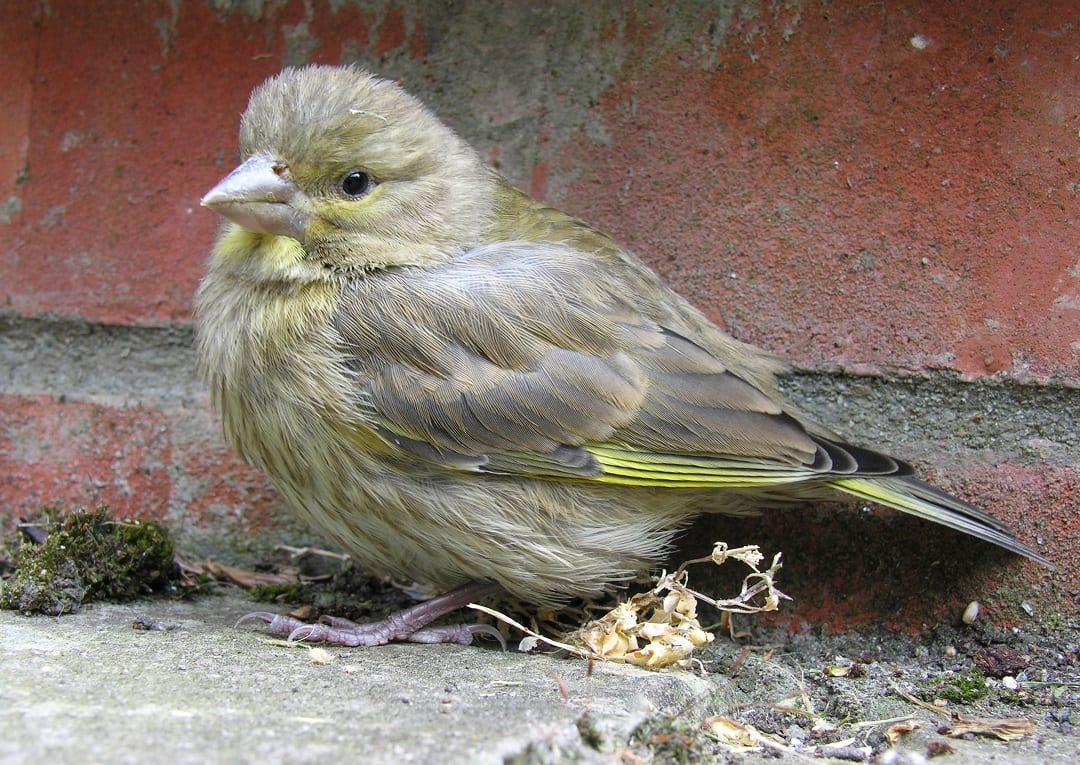

Pied Wagtail
Juvenile Pied Wagtails are largely grey, rather than the black and white of the adults. Their tails might be a bit shorter than those of adults and there might be a yellow-ish wash to the white area on the ‘face’.




Bullfinch
Juvenile birds lack the black cap that the adults have. Adult females are duller than the vibrant red males, but they still have a black cap.


Long-tailed Tit
Long-tailed Tits are one of very few species in Ireland that do a full moult in the late summer and autumn, at which point they look the exact same as the adults. In the weeks after fledgling though, they have a mostly-black head and a lovely red orbital ring around the eye. You won’t see much pink in their plumage, in contrast with the adults. This species is very vocal, with a high pitch call to each other, so you might hear them before you see them.


Swallow
In juveniles, the face-patch is a pale orange, while the tail streamers are appreciably shorter than on adults. They also lack the glossy shine of the adults blue/black feathers, but rather are more dull. The bill of juveniles may still be largely yellow, and you may see them begging for food from adults.


Great-spotted Woodpecker
If you’re lucky enough to have Woodpeckers near you, then the feature to keep an eye is the colour of the head. Recently-fledged juveniles have a red cap. Adults have a black cap, by comparison (males have a small bit of red on the back of the head).


Become a BirdWatch Ireland Member
BirdWatch Ireland is Ireland’s leading wildlife conservation charity. By joining us as a member today you will be making a direct contribution to the protection of Ireland’s birds and biodiversity. Members receive our print magazine Wings four times per year as well as a welcome-pack and other benefits.

